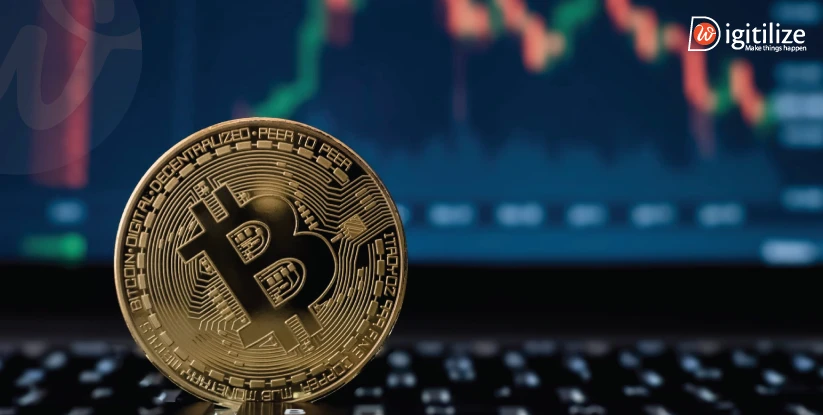History of Cryptocurrency!
 Since its inauspicious beginnings, cryptocurrency has advanced significantly. Understanding the origins of Bitcoin of cryptocurrencies and how they became so widely used today is helpful when investing in their lucrative prospects. The blockchain technology development, the first cryptocurrency, and the unheard-of boom that history of cryptocurrency are currently experiencing are all discussed in this essay.
Since its inauspicious beginnings, cryptocurrency has advanced significantly. Understanding the origins of Bitcoin of cryptocurrencies and how they became so widely used today is helpful when investing in their lucrative prospects. The blockchain technology development, the first cryptocurrency, and the unheard-of boom that history of cryptocurrency are currently experiencing are all discussed in this essay.
The first idea of the cryptocurrency
In 1983, American cryptographer David Chaum introduced the idea of cryptographic electronic money. He shared this concept in a conference paper. His goal was simple—create a payment system that kept users anonymous and didn’t rely on a central authority.
By 1995, Chaum turned this idea into reality. He launched Digicash, one of the first digital currencies. The system used encryption and required special software. Users had to withdraw funds from a bank before sending them to someone else.
While groundbreaking, Digicash faced major hurdles. The process was complex, and banks were slow to adopt it. Still, Chaum remains a key figure in crypto history for laying the foundation of what came next.
-
Absence of Adoption:
-
Centralization:
-
Trust Problems:
Chaum’s system required users to trust a central authority. This authority had to ensure the privacy and accuracy of all transactions. But this goes against the core idea behind today’s cryptocurrencies, creating a system that doesn’t rely on trust.
In 1998, Nick Szabo introduced Bit Gold. Many see it as the direct forerunner to Bitcoin. In this system, users solved complex cryptographic puzzles using computer power to earn rewards. When you combine Szabo’s idea with Chaum’s earlier work, you get a model very close to what Bitcoin later became.
Significant historical events in the development of cryptocurrencies
 Cryptocurrencies are designed to limit the amount of money in circulation. When the company released its solution as open-source software, it was put into use. Because cryptocurrency is decentralized and freely distributed, law enforcement cannot seize it.
The first mention of cryptocurrencies dates back to the 1980s, specifically in 1989. However, the software and cryptographic techniques necessary for establishing a truly decentralized digital currency began development in the early 1990s.
In 2008, a paper was published by Satoshi Nakamoto (a pseudonym) outlining a system for creating digital currency without relying on a third party. Satoshi Nakamoto’s paper effectively initiated the Bitcoin revolution of digital currency. Let’s take a quick look at these cryptocurrency milestones up to 2023.
Cryptocurrencies are designed to limit the amount of money in circulation. When the company released its solution as open-source software, it was put into use. Because cryptocurrency is decentralized and freely distributed, law enforcement cannot seize it.
The first mention of cryptocurrencies dates back to the 1980s, specifically in 1989. However, the software and cryptographic techniques necessary for establishing a truly decentralized digital currency began development in the early 1990s.
In 2008, a paper was published by Satoshi Nakamoto (a pseudonym) outlining a system for creating digital currency without relying on a third party. Satoshi Nakamoto’s paper effectively initiated the Bitcoin revolution of digital currency. Let’s take a quick look at these cryptocurrency milestones up to 2023.
-
Bitcoin
-
Ripples (XRP)
XRP was first launched in 2012 under the name OpenCoin. It is the native token of the Ripple Ledger Network. The main goal of XRP is to link different fiat currencies and make cross-border payments faster and cheaper. It acts as both a value carrier and a medium of exchange.
Ripple got major attention in 2017. Banks started using its network for fast, secure money transfers. While XRP is often compared to Bitcoin, it serves a different purpose. Here’s how it works: money is first converted into XRP. Then, on the other end, it gets converted back into the local currency. Ripple’s team says XRP is quicker and more stable than many other cryptocurrencies, even Bitcoin.
-
Dogecoin
-
Ethereum (ether)
Ethereum gives people access to financial services without needing a bank. It works globally, no matter your country, religion, or background. Anyone with internet can use it.
This is a big help for people in places where banking systems don’t work well. With Ethereum, they can open digital wallets, get loans, buy insurance, and use other financial tools. They don’t need to show government IDs or rely on state systems. In 2025, Ethereum continues to lead the way in building a more open and fair financial world.
-
Polkadot
Developers introduced the Polkadot (DOT) blockchain interoperability protocol in 2016. Its main goal is to connect multiple blockchains. Polkadot lets different chains exchange data and process transactions through parachains, secondary blockchains that work alongside the main one.
The central relay chain keeps the network secure while supporting communication between chains. This setup gives developers the power to build custom blockchains for specific needs.
With Polkadot, they don’t have to build separate security systems. Instead, they benefit from Polkadot’s shared security model. This makes development faster, safer, and more scalable. Polkadot is a key tool for blockchain projects in 2025 that need true cross-chain interoperability.
-
Binance Coin
-
Solana
Solana entered the blockchain space in 2020. It quickly stood out by offering better scalability than Ethereum or Bitcoin. With fast transaction speeds and very low fees, Solana became popular among developers and users alike. It’s also known for its low environmental impact, which added to its appeal.
Thanks to these strengths, Solana became a top choice for NFTs, DeFi apps, and decentralised exchanges (DEXs). The platform runs on its native token, SOL.
But Solana isn’t perfect. Critics have called it less decentralised than other blockchains. Venture capital firms hold major influence, and the platform has suffered several major outages.
With so many cryptocurrencies in the market, choosing the right one can be tough. To help you out, we’ve included a table showing the latest values of key cryptocurrencies.
Table of market cap till 2023 and future prediction| Cryptocurrencies | Market cap | |||
| No. | Name | 2023 | 2050 (average) | 2050 (maximum) |
| 1 | BitCoin | $30,144 | $71,437.97 | $83,420.47 |
| 2 | Ethereum (ether) | $2,755 | $4,559 | $6,564 |
| 3 | Binance Coin | $490.37 | $872.99 | $1,042.62 |
| 4 | Solana | $25.37 | $61.60 | $72.44 |
| 5 | Polkadot | $5.49 | $15.11 | $17.69 |
| 6 | Ripples (XRP) | $0.777083 | $1.47 | $1.74 |
| 7 | Dogecoin | $0.075406 | $0.179982 | $0.209979 |
Future Outlook of Cryptocurrencies:
 Bitcoin’s market will likely stay mostly the same in 2023 or beyond. We have to keep going with considering up and down. When you decide to invest in coins, you must be update about cryptos’ market shifts.
As we all know,the world, the digital economy, and the market are dynamic. It is crucial to do proper studies about the future aspect of cryptocurrencies. The following prediction will be base on research about the market’s ups and downs.
Since the last few years, crypto’s values have dramatically increased, and it is also predicted to continue from 2023 onwards. Regulation of cryptocurrencies control will probably get tighter as the crypto sector expands.
Governments are considering a few ways to regulate digital currencies, and even some have started implementing them.
The cryptocurrency market constantly shifts due to the emergence of new currencies. In 2023, we may look forward to the emergence of brand-new cryptocurrencies with cutting-edge functions and uses.
Bitcoin’s market will likely stay mostly the same in 2023 or beyond. We have to keep going with considering up and down. When you decide to invest in coins, you must be update about cryptos’ market shifts.
As we all know,the world, the digital economy, and the market are dynamic. It is crucial to do proper studies about the future aspect of cryptocurrencies. The following prediction will be base on research about the market’s ups and downs.
Since the last few years, crypto’s values have dramatically increased, and it is also predicted to continue from 2023 onwards. Regulation of cryptocurrencies control will probably get tighter as the crypto sector expands.
Governments are considering a few ways to regulate digital currencies, and even some have started implementing them.
The cryptocurrency market constantly shifts due to the emergence of new currencies. In 2023, we may look forward to the emergence of brand-new cryptocurrencies with cutting-edge functions and uses.
Future
Cryptocurrencies are changing how we think about money. They offer a strong alternative to traditional currencies. Why? Because they are decentralized, transparent, fast, and accessible around the world. They also reduce transaction fees.
Since no government or bank controls them, cryptocurrencies bring more stability and security to finance. Their public ledger adds transparency, which helps reduce crimes like fraud and money laundering.
Many predictions still look at past market trends. But things are evolving fast. Technologies like Web3 and full decentralization are reshaping the crypto space. These changes could push the next bull run beyond what most experts expect.
In this new system, users can send and receive money instantly, no banks or middlemen needed. This shift could have a massive impact on how we use digital currencies in 2025 and beyond. So, this is a development to closely monitor as it could become the next major milestones in cryptocurrency trend, as suggested in one cryptocurrency forecast.

